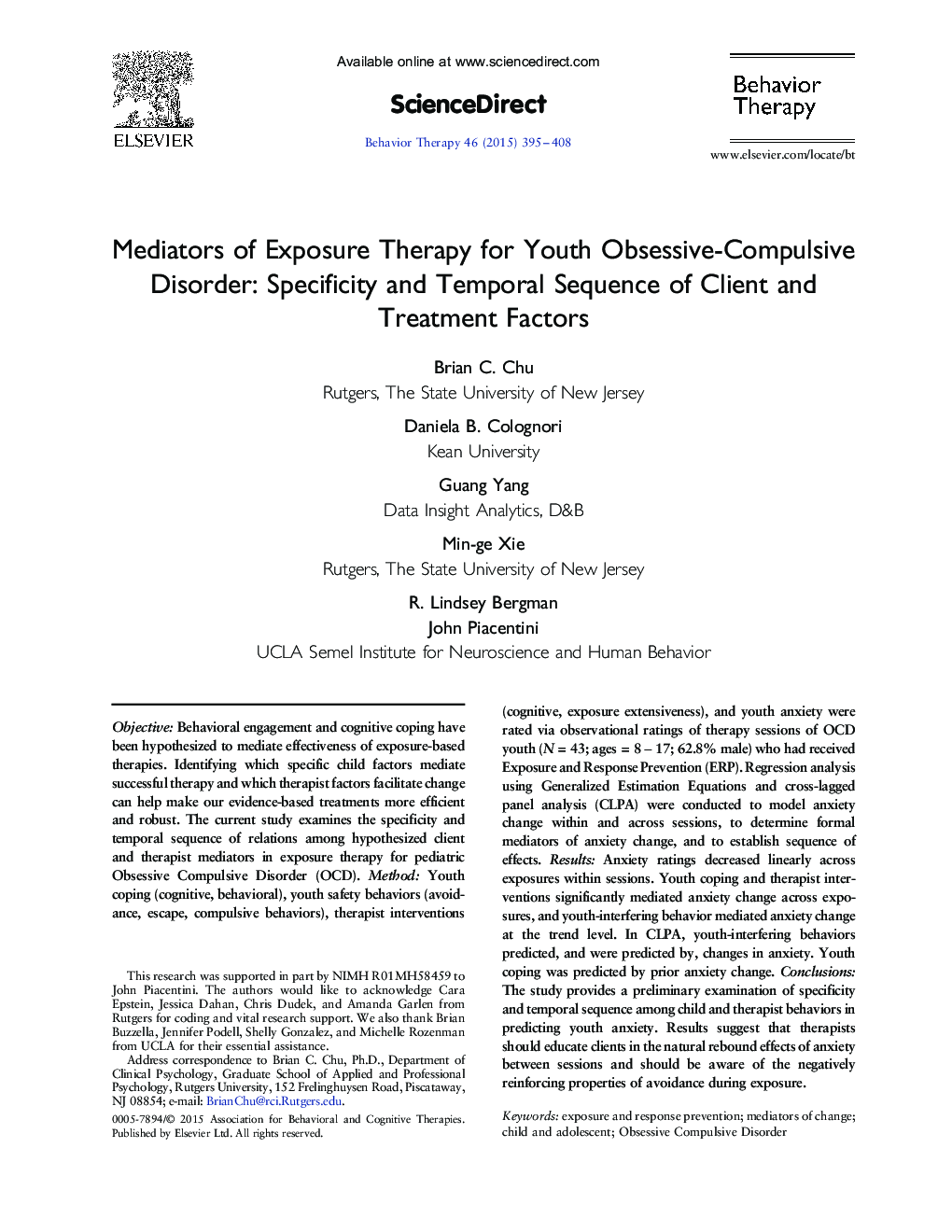| Article ID | Journal | Published Year | Pages | File Type |
|---|---|---|---|---|
| 901261 | Behavior Therapy | 2015 | 14 Pages |
•The roles, and sequence of effects, of cognitive and behavioral mediators were explored in exposure treatment for youth OCD.•Anxiety ratings decreased linearly across exposures within sessions; a rebound effect was found between sessions.•Youth coping and therapist interventions significantly mediated anxiety change across exposures.•Youth interfering behaviors and coping showed reciprocal relations with anxiety.•Clients should be educated about rebound effects between exposures and the negatively reinforcing properties of avoidance.
ObjectiveBehavioral engagement and cognitive coping have been hypothesized to mediate effectiveness of exposure-based therapies. Identifying which specific child factors mediate successful therapy and which therapist factors facilitate change can help make our evidence-based treatments more efficient and robust. The current study examines the specificity and temporal sequence of relations among hypothesized client and therapist mediators in exposure therapy for pediatric Obsessive Compulsive Disorder (OCD).MethodYouth coping (cognitive, behavioral), youth safety behaviors (avoidance, escape, compulsive behaviors), therapist interventions (cognitive, exposure extensiveness), and youth anxiety were rated via observational ratings of therapy sessions of OCD youth (N = 43; ages = 8 – 17; 62.8% male) who had received Exposure and Response Prevention (ERP). Regression analysis using Generalized Estimation Equations and cross-lagged panel analysis (CLPA) were conducted to model anxiety change within and across sessions, to determine formal mediators of anxiety change, and to establish sequence of effects.ResultsAnxiety ratings decreased linearly across exposures within sessions. Youth coping and therapist interventions significantly mediated anxiety change across exposures, and youth-interfering behavior mediated anxiety change at the trend level. In CLPA, youth-interfering behaviors predicted, and were predicted by, changes in anxiety. Youth coping was predicted by prior anxiety change.ConclusionsThe study provides a preliminary examination of specificity and temporal sequence among child and therapist behaviors in predicting youth anxiety. Results suggest that therapists should educate clients in the natural rebound effects of anxiety between sessions and should be aware of the negatively reinforcing properties of avoidance during exposure.
